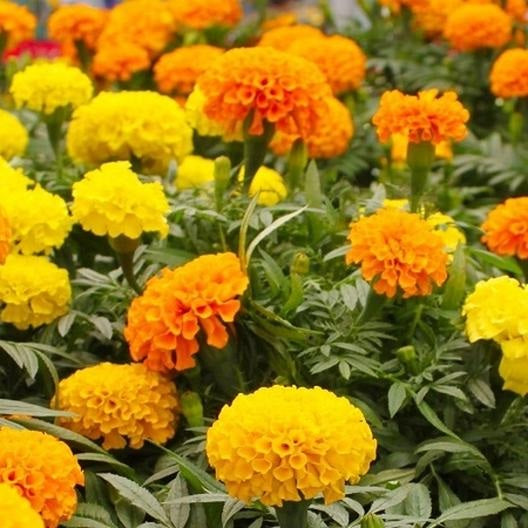The Bamboo Seed
Marigold Seeds - African
Marigold Seeds - African
Couldn't load pickup availability
African Marigold Seeds
- Qty 100 Crackerjack Mix African Marigold Seeds
- Tagetes erecta seeds
- USDA zones 2-11
- Annual flower seeds
- Marigold seeds
- Common names: Aztec marigold, Mexican marigold, Big marigold
- Cold hardy plants
Growing Marigold Flowers from Seed
Gardeners seeking vibrant, long-lasting blooms in their gardens should consider planting Crackerjack Marigold seeds. Marigolds are known for their bright, cheerful flowers in shades of yellow, orange, and red, which add a burst of color to any garden setting. These hardy annuals are easy to grow from seed and are highly valued for their pest-repellent properties, making them excellent companion plants for vegetables and other flowers.
African Marigolds bloom profusely from early summer until frost, providing continuous color and attracting beneficial pollinators like bees and butterflies. With their low maintenance needs and ability to thrive in a variety of soil conditions, marigolds are a fantastic choice for both novice and experienced gardeners looking to enhance the beauty and health of their gardens.
Marigold Seed Germination Indoors
Germinating Marigold seeds indoors is a simple process that can be done in a few easy steps:
Select a Container: Choose a container with good drainage. Seed starting trays or small pots work well for this purpose. Ensure the container is clean and sterilized to prevent disease.
Prepare the Soil: Use a well-draining seed-starting mix or a combination of peat moss and perlite. Fill the container to within about 1/2 inch of the top.
Moisten the Soil: Water the soil until it's evenly moist but not waterlogged. Allow excess water to drain out.
Sow the Seeds: Place the marigold seeds on top of the soil, spacing them about 1 inch apart. Lightly press the seeds into the soil, but do not cover them with additional soil as marigold seeds need light to germinate.
Cover the Container: Cover the container with a clear plastic dome or plastic wrap to create a mini greenhouse effect. This helps to retain moisture and warmth, which aids germination.
Provide Adequate Light and Temperature: Place the container in a warm, brightly lit area. Ideal temperatures for germinating marigold seeds are between 70-80°F (21-27°C). A sunny windowsill or under grow lights works well.
Keep the Soil Moist: Check the soil moisture regularly and water when the top of the soil feels dry. Avoid overwatering, as this can lead to fungal issues.
Remove the Cover: Once the seeds have germinated and small seedlings have emerged (usually within 7-10 days), remove the plastic cover to prevent excessive humidity and encourage air circulation.
Transplant the Seedlings: When the seedlings have developed a couple of true leaves and are about 2-3 inches tall, they can be transplanted into larger containers or directly into the garden, spacing them according to the variety's recommendations.
Provide Adequate Care: Continue to water the seedlings regularly, ensuring that the soil remains evenly moist. Marigolds prefer full sun and well-drained soil. Fertilize with a balanced fertilizer every 2-3 weeks.
With proper care and attention, your marigold seeds should germinate and grow into healthy plants that will reward you with beautiful blooms.
Sowing Marigold Seeds Outdoors
To successfully sow and grow marigold seeds outdoors, follow these instructions:
Choose the Right Time: Sow marigold seeds outdoors after the last frost when the soil has warmed up. In warmer climates, seeds can be sown in late fall for winter blooms.
Select a Location: Marigolds prefer a sunny spot in the garden that receives at least 6 hours of direct sunlight daily. They are not fussy about soil but do best in well-draining soil.
Prepare the Soil: Loosen the soil to a depth of about 6-8 inches and remove any debris. If the soil is heavy or poor, mix in some compost or well-rotted manure to improve drainage and fertility.
Sow the Seeds: Scatter the seeds lightly over the soil surface or plant them in rows. Cover the seeds with a thin layer of soil (about 1/4 inch deep). Gently press down the soil to ensure good seed-to-soil contact.
Water Gently: Water the area lightly with a fine mist to moisten the soil without disturbing the seeds. Keep the soil consistently moist until the seeds germinate.
Thin Seedlings: Once the seedlings are a few inches tall, thin them to about 8-12 inches apart, depending on the variety. This will give each plant enough space to grow and ensure good air circulation.
Care and Maintenance: Water the marigolds regularly, especially during dry periods, but avoid overwatering. Deadhead spent flowers to encourage continuous blooming. Marigolds are generally low-maintenance and do not require much fertilization.
Enjoy the Blooms: Marigolds will start blooming in about 8 weeks after sowing and will continue to produce vibrant flowers throughout the summer and into fall.
By following these steps, you can enjoy the bright and cheerful presence of marigolds in your garden, adding color and attracting beneficial insects to your outdoor space.
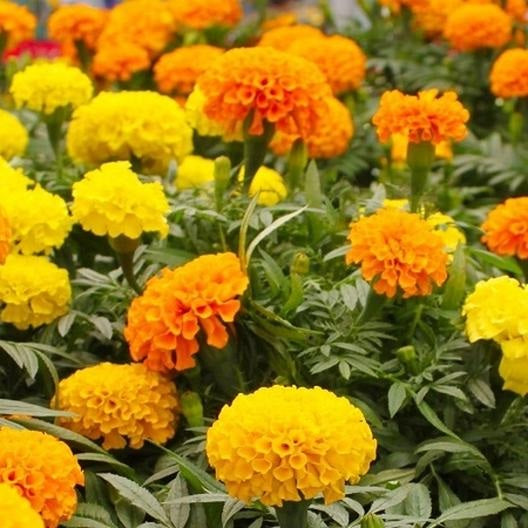
Collections
-

All Bamboo Seeds for Sale
Welcome to our catalog of bamboo plant seeds for sale including clumping...
-
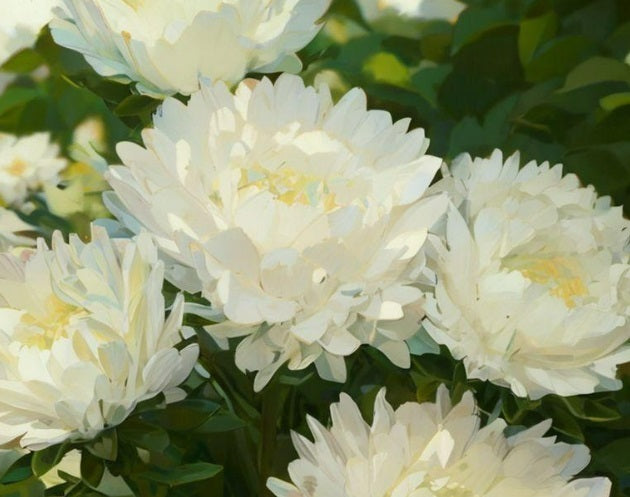
All Flower Seeds
All of our 2025 flower seeds are sold out. Please check back...
-
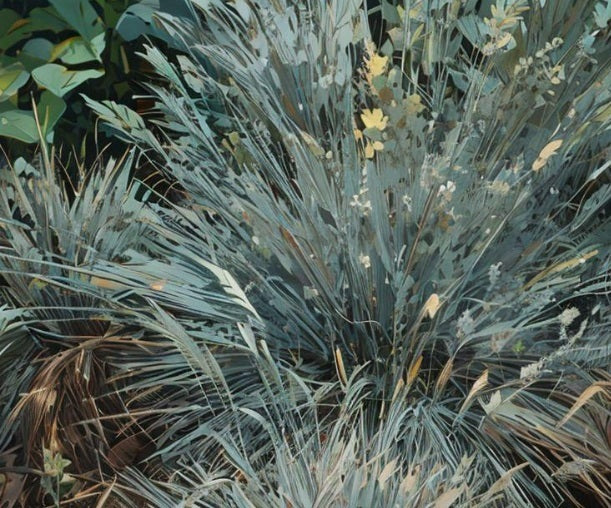
All Ornamental Grass Seeds
Grass has finally come into its own as a garden landscape centerpiece....
-
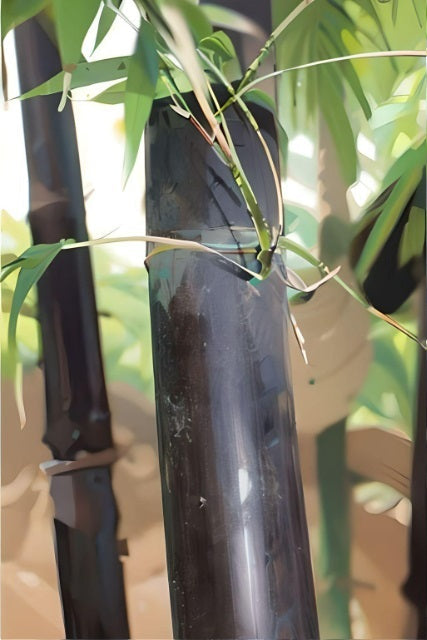
Black Bamboo Seeds
Consider Black Bamboo seeds for eye-catching bamboo varieties with lustrous black, dark...
-
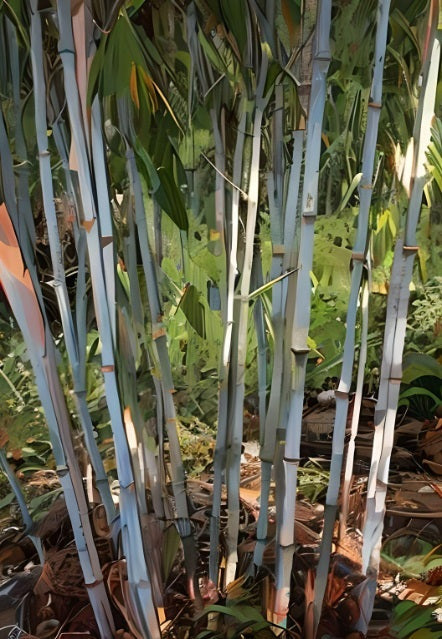
Clumping Bamboo Seeds
Clumping bamboo species grow in dense clumps or clusters that are naturally...
-

Cold Hardy Bamboo Seeds
A selection of cold resistant bamboo seeds for hardy bamboo able to...
-
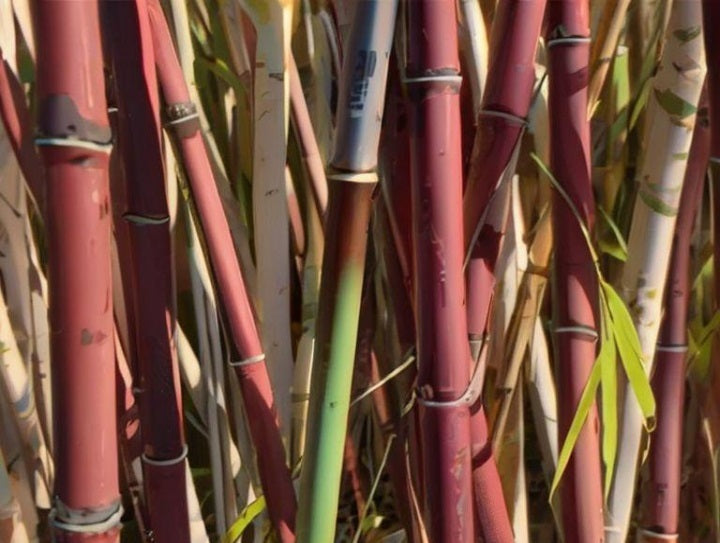
Fargesia Bamboo Seeds - Clumping and Cold Hardy
Buy bamboo seeds for beautiful cold hardy and clumping Fargesia bamboo. Our...
-

Giant Bamboo Seeds
When you're looking for impressive size with ample shade below, consider fastest...
-

Running Bamboo Seeds
Running bamboo spreads through underground runners, known as rhizomes. These rhizomes can...
-

Tropical Bamboo Seeds
Our curated selection of tropical bamboo seeds best suited for planting in...

